Aramco Bundle
Who Really Owns Saudi Aramco?
Unraveling the Aramco SWOT Analysis reveals a complex web of ownership that dictates the company's future. From its humble beginnings as the California-Arabian Standard Oil Company to its current status as a global energy giant, Saudi Aramco's journey is a testament to its strategic evolution. Understanding "Who owns Aramco" is crucial for anyone seeking to navigate the intricacies of the global energy market.
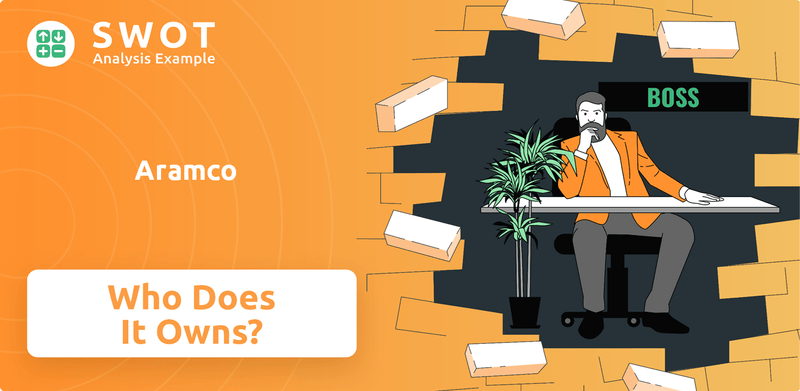
This deep dive into Aramco ownership explores the evolution of its shareholder structure, from its early days to its current publicly traded status. Examining the Aramco history and its relationship with the Saudi government provides vital insights into its strategic direction and its impact on the global energy landscape. Understanding the dynamics of "Who owns Aramco" is essential for investors, analysts, and anyone interested in the future of energy.
Who Founded Aramco?
The story of Aramco, officially known as the Saudi Arabian Oil Company, began in 1933 with a concession agreement. This agreement was signed between Saudi Arabia and the Standard Oil Company of California (SOCAL), now known as Chevron. This marked the beginning of a long and complex journey for the oil giant.
To manage the agreement, the California Arabian Standard Oil Company (CASOC) was formed as a subsidiary. Initially, CASOC was entirely owned by SOCAL. The company's evolution reflects the changing dynamics of the global oil industry and the strategic importance of Saudi Arabia's vast oil reserves.
The early years of Aramco are characterized by the involvement of major American oil companies and the close partnership with the Saudi government. The company's ownership structure and its relationship with the Saudi state have been central to its operations and influence.
In 1936, Texaco joined the venture, leading to a 50/50 ownership split with Chevron. This partnership was crucial in the early development of Aramco. The collaboration between these companies was vital for the exploration and extraction of Saudi Arabia's oil resources.
By 1944, the company's name was changed to the Arabian American Oil Company, or Aramco. This change reflected the growing involvement of American companies. The name change also symbolized the expansion of operations and the increasing significance of the company.
In 1948, Standard Oil of New Jersey (later Exxon) and Socony-Vacuum Oil (later Mobil) acquired stakes. This led to a diverse ownership structure. This expansion brought in more resources and expertise.
The ownership structure was: Chevron (30%), Texaco (30%), Exxon (30%), and Mobil (10%). This structure remained in place for several years. The distribution of ownership impacted decision-making and resource allocation.
The founders focused on exploring and extracting Saudi Arabia's oil. King Abdulaziz Al Saud closely monitored the company's activities. His early interest in oil exploration was crucial.
Early agreements focused on establishing the operational framework for oil production and export. The completion of the Trans-Arabian Pipeline (Tapline) in 1950 was a major achievement. The pipeline significantly reduced export time and costs.
The early ownership of Aramco, therefore, involved a consortium of major American oil companies. The Saudi Arabian Oil Company's history is a testament to the collaboration between the Saudi government and international oil companies. The evolution of Aramco ownership has shaped the company's operations and its significance in the global oil market. For more details, you can read about the Aramco's IPO details and ownership.
The early ownership of Aramco was primarily held by American oil companies. The involvement of Chevron, Texaco, Exxon, and Mobil was crucial. The Saudi government played a key role in overseeing operations.
- The initial concession was signed in 1933 with SOCAL (Chevron).
- Texaco joined in 1936, creating a 50/50 partnership with Chevron.
- By 1948, Exxon and Mobil also acquired stakes.
- The early ownership structure set the stage for Aramco's future.
Aramco SWOT Analysis
- Complete SWOT Breakdown
- Fully Customizable
- Editable in Excel & Word
- Professional Formatting
- Investor-Ready Format
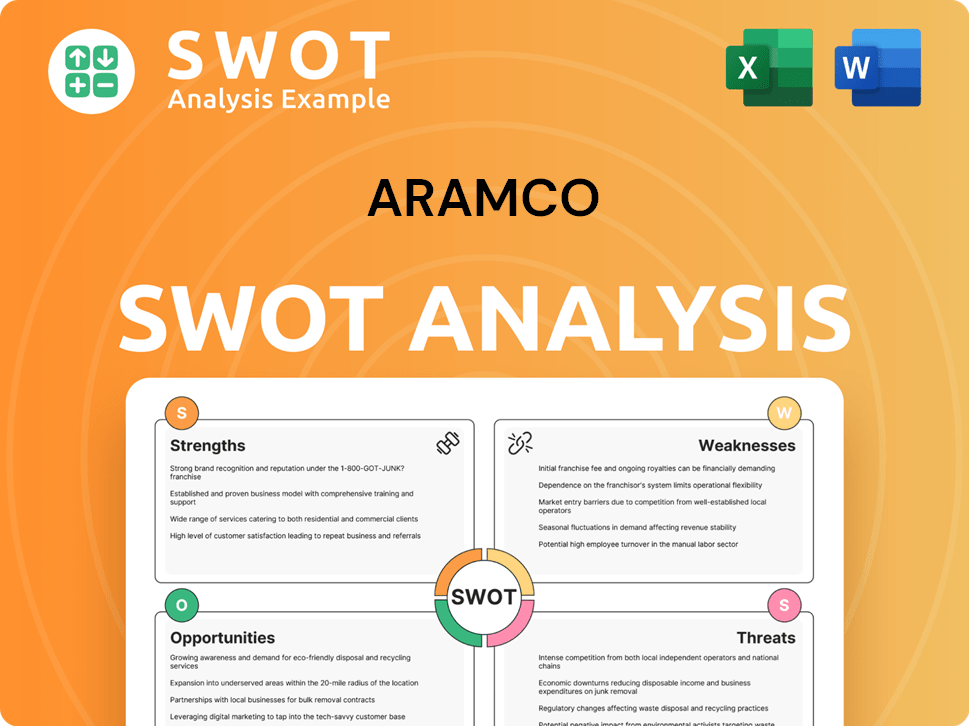
How Has Aramco’s Ownership Changed Over Time?
The evolution of Aramco ownership reflects a significant shift from its early days. Initially, American oil companies held a major stake. However, this changed dramatically as the Saudi government gradually acquired ownership, culminating in the company's near-complete nationalization. This transition has profoundly shaped the company's strategic direction and its role in the Saudi Arabian economy.
Key events have significantly impacted the ownership structure of the Saudi Arabian Oil Company. In the 1970s, the Saudi government began acquiring shares, increasing its stake from 25% in 1973 to 60% in 1974. By 1980, the government achieved full ownership. The company was officially established as Saudi Aramco in 1988. A major milestone was the initial public offering (IPO) in 2019, which introduced public shares.
| Year | Ownership Change | Details |
|---|---|---|
| 1973 | Partial Acquisition | Saudi government purchases a 25% interest. |
| 1974 | Increased Stake | The Saudi government's interest increases to 60%. |
| 1980 | Full Nationalization | The Saudi government achieves 100% ownership. |
| 1988 | Official Establishment | The company is officially established as Saudi Aramco. |
| 2019 | Initial Public Offering (IPO) | Aramco sells shares to the public, marking a partial listing. |
As of June 2024, the Saudi government, along with related entities, holds approximately 97.62% of Aramco's shares. The Public Investment Fund (PIF) owns an additional 16%. The remaining shares are available for public trading on the Saudi Exchange (Tadawul). International institutional investors hold about 0.73%, domestic institutional investors hold about 0.89%, and retail investors hold about 0.76% of the issued shares. This ownership structure ensures that Aramco's strategic goals align with the Kingdom's economic vision, as detailed in the Growth Strategy of Aramco.
The Saudi government is the primary owner of Aramco, with a significant majority stake.
- The IPO in 2019 marked a shift towards public ownership, but the government remains in control.
- Aramco's profits significantly support the Saudi government's development projects.
- The ownership structure directly influences Aramco's strategic decisions and its role in the Kingdom's economy.
- The company's market capitalization was approximately $1.7 trillion at the time of the IPO.
Aramco PESTLE Analysis
- Covers All 6 PESTLE Categories
- No Research Needed – Save Hours of Work
- Built by Experts, Trusted by Consultants
- Instant Download, Ready to Use
- 100% Editable, Fully Customizable
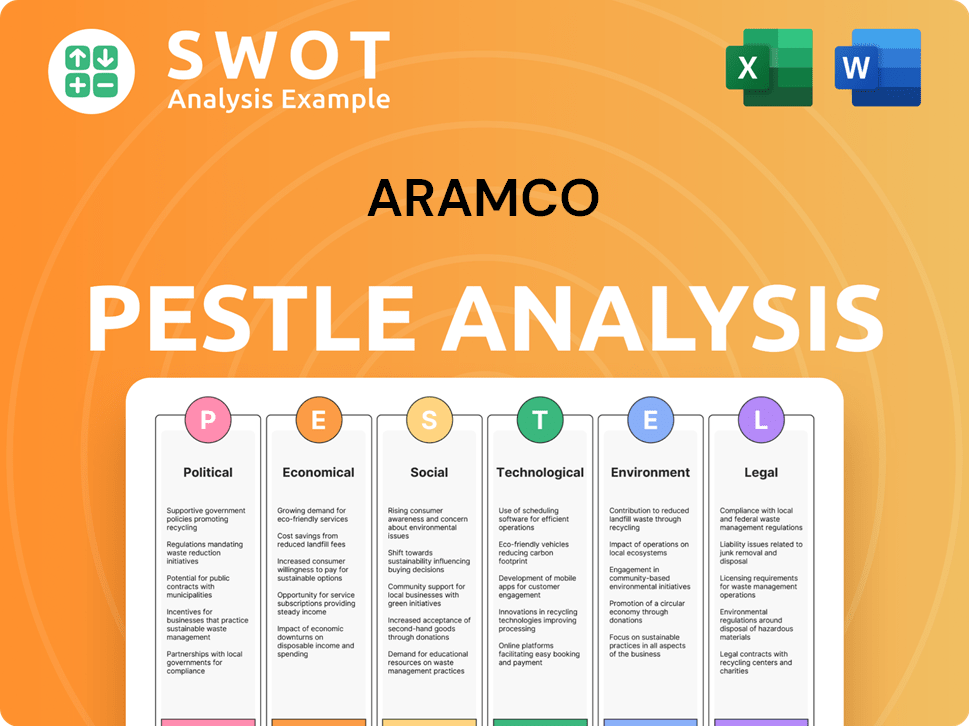
Who Sits on Aramco’s Board?
The current board of directors of Saudi Aramco, also known as the Saudi Arabian Oil Company, plays a vital role in the company's governance. The board is closely linked to its majority shareholder, the Saudi government. As of the latest information, the board includes members representing major shareholders and independent seats. Yasir O. Al-Rumayyan serves as the Chairman and has been on the board since 2016. Dr. Ibrahim A. Al-Assaf is the Deputy Chairman, serving since 1999. Other non-executive directors include Mohammed A. Al-Jadaan and Mohammad M. Al-Tuwaijri, both appointed in 2018. The board also includes independent non-executive directors such as Andrew N. Liveris and Lynn Laverty Elsenhans, who joined in 2018. Amin H. Nasser serves as the President and CEO and is also a board member.
The composition of the board reflects the company's ownership structure. The board's role is to provide strategic guidance and oversight, ensuring the company's operations align with its long-term objectives and the Kingdom's broader economic vision. Understanding the key decision-makers at Aramco is crucial for anyone looking into Aramco ownership.
| Board Member | Role | Year Joined |
|---|---|---|
| Yasir O. Al-Rumayyan | Chairman | 2016 |
| Dr. Ibrahim A. Al-Assaf | Deputy Chairman | 1999 |
| Amin H. Nasser | President and CEO | - |
| Mohammed A. Al-Jadaan | Non-Executive Director | 2018 |
| Mohammad M. Al-Tuwaijri | Non-Executive Director | 2018 |
| Andrew N. Liveris | Independent Non-Executive Director | 2018 |
| Lynn Laverty Elsenhans | Independent Non-Executive Director | 2018 |
In terms of voting structure, Saudi Aramco operates with one class of ordinary shares, where each share entitles its holder to one vote. However, the Saudi government, as the dominant shareholder with approximately 97.62% of issued shares, maintains significant control. This substantial ownership stake grants the government considerable influence over company decisions. The Saudi government retains the power to set the maximum oil production level at any given time. The company's governance structure, with its strong state ownership, generally leads to a more unified decision-making process. For more insights into the company's strategy, consider exploring the Target Market of Aramco.
The board of directors is central to Aramco's governance, with strong ties to the Saudi government.
- The Saudi government, holding approximately 97.62% of shares, has significant control.
- The board includes members representing major shareholders and independent directors.
- The voting structure is straightforward, with one vote per share, but the government's ownership dominates.
- The board guides strategy and ensures alignment with the Kingdom's economic goals.
Aramco Business Model Canvas
- Complete 9-Block Business Model Canvas
- Effortlessly Communicate Your Business Strategy
- Investor-Ready BMC Format
- 100% Editable and Customizable
- Clear and Structured Layout
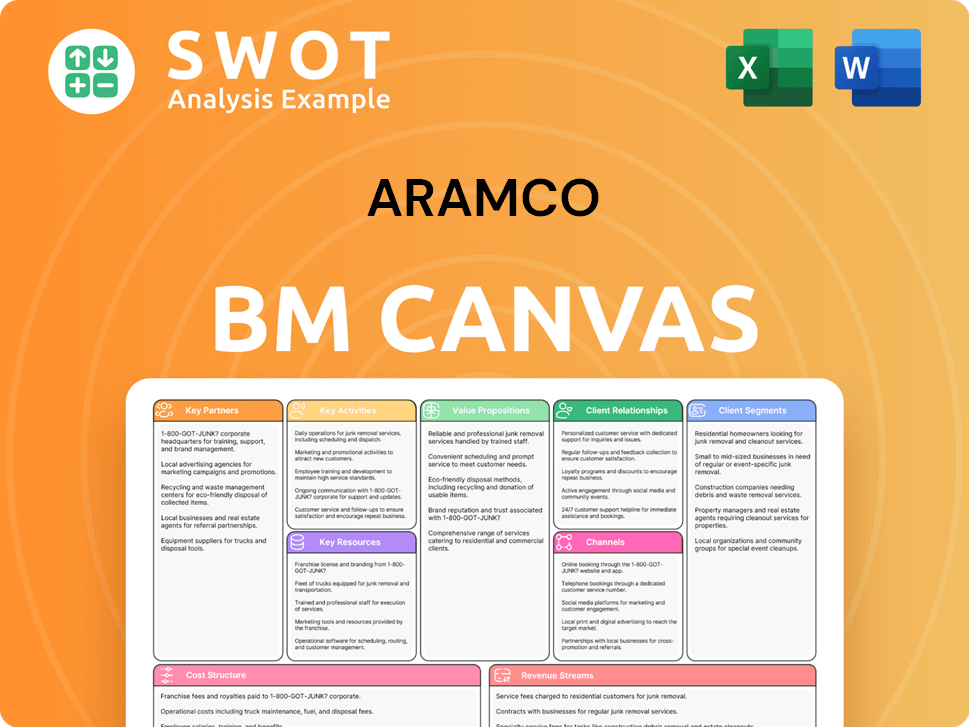
What Recent Changes Have Shaped Aramco’s Ownership Landscape?
Over the past few years, the ownership structure of Saudi Aramco, also known as the Saudi Arabian Oil Company, has evolved significantly. A key development involves the transfer of shares to the Public Investment Fund (PIF), reflecting the Saudi government's strategic initiatives. In February 2022, the Crown Prince transferred 4% of Aramco's shares to the PIF. Further, on March 7, 2024, an additional 8% of shares were transferred to PIF-owned portfolio companies, valued at approximately $160 billion. These moves align with Saudi Vision 2030, aimed at economic diversification and strengthening the PIF.
As of June 2024, the Saudi government's direct ownership in Aramco is approximately 82.186%. When including related entities like the PIF, the total ownership by the Saudi government and its associated entities reaches around 97.62%. These changes in Aramco ownership are part of a broader strategy to boost the national economy. The recent transfers to the PIF highlight a shift in the Aramco ownership structure, aiming to support the PIF's financial position and credit rating. Understanding these changes is crucial for anyone tracking the company's performance and its impact on the global energy market. For more insights, you can read about the Growth Strategy of Aramco.
| Ownership Change | Date | Details |
|---|---|---|
| Transfer to PIF | February 2022 | 4% of shares transferred |
| Transfer to PIF Portfolio Companies | March 7, 2024 | 8% of shares transferred, valued at $160 billion |
| Saudi Government Direct Ownership | June 2024 | Approximately 82.186% |
| Total Government and Related Entities Ownership | June 2024 | Approximately 97.62% |
Aramco's financial performance also influences ownership trends. In 2024, the company reported a net income of $106.2 billion, a decrease from $121.3 billion in 2023, mainly due to lower crude oil prices. Despite this, the company increased its quarterly base dividend by 4.2% to $21.1 billion for Q4 2024, paid in Q1 2025. However, the performance-linked dividend for Q1 2025 was $0.2 billion, a steep decline from the approximately $10.8 billion declared for each quarter of 2024, leading to an expected total dividend of $85.4 billion in 2025, down from $124.2 billion in 2024. This adjustment aims to balance shareholder payouts with rising capital investments, with a guidance of $52 billion to $58 billion for capital investment in 2025.
The Saudi government directly owns around 82.186% of Aramco as of June 2024.
The Public Investment Fund (PIF) holds a significant portion of Aramco shares.
Aramco adjusted its dividend policy in 2024, balancing shareholder returns with capital investments.
Aramco is investing in energy transition and expanding its gas business.
Aramco Porter's Five Forces Analysis
- Covers All 5 Competitive Forces in Detail
- Structured for Consultants, Students, and Founders
- 100% Editable in Microsoft Word & Excel
- Instant Digital Download – Use Immediately
- Compatible with Mac & PC – Fully Unlocked
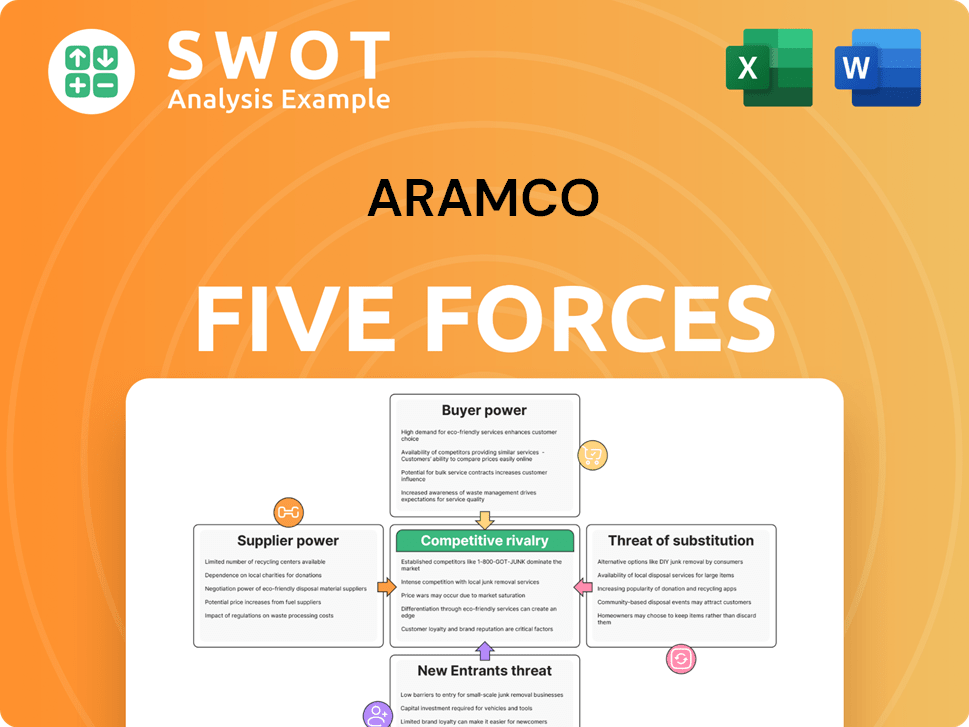
Related Blogs
- What are Mission Vision & Core Values of Aramco Company?
- What is Competitive Landscape of Aramco Company?
- What is Growth Strategy and Future Prospects of Aramco Company?
- How Does Aramco Company Work?
- What is Sales and Marketing Strategy of Aramco Company?
- What is Brief History of Aramco Company?
- What is Customer Demographics and Target Market of Aramco Company?
Disclaimer
All information, articles, and product details provided on this website are for general informational and educational purposes only. We do not claim any ownership over, nor do we intend to infringe upon, any trademarks, copyrights, logos, brand names, or other intellectual property mentioned or depicted on this site. Such intellectual property remains the property of its respective owners, and any references here are made solely for identification or informational purposes, without implying any affiliation, endorsement, or partnership.
We make no representations or warranties, express or implied, regarding the accuracy, completeness, or suitability of any content or products presented. Nothing on this website should be construed as legal, tax, investment, financial, medical, or other professional advice. In addition, no part of this site—including articles or product references—constitutes a solicitation, recommendation, endorsement, advertisement, or offer to buy or sell any securities, franchises, or other financial instruments, particularly in jurisdictions where such activity would be unlawful.
All content is of a general nature and may not address the specific circumstances of any individual or entity. It is not a substitute for professional advice or services. Any actions you take based on the information provided here are strictly at your own risk. You accept full responsibility for any decisions or outcomes arising from your use of this website and agree to release us from any liability in connection with your use of, or reliance upon, the content or products found herein.